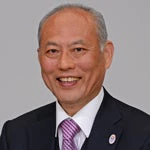The IPCC’s Fifth Assessment Report firmly centered on the reality of human-driven climate change. If we don’t take immediate and tangible steps to reduce the consequences of these actions, we will face an environmental crisis that will have a major impact on mankind’s existence. Here in Tokyo, we are extremely concerned about this danger, as it poses a huge threat to our goal of becoming a sustainable and environmentally-friendly city.
In the year 2030, it is estimated that the number of people living in urban areas will exceed 60 percent of the world’s population, and measures at the city level are now crucial. The effects of climate change are already becoming apparent in a range of forms, and Tokyo is no exception. Tokyo has undertaken several measures to mitigate these effects, including launching the world’s first urban cap-and-trade program. In addition, Tokyo is implementing a number of pioneering initiatives, such as measures to counteract storm surges and floods, as well as major earthquakes, and advancing urban planning to realize a more resilient city.
At the same time, Tokyo is working with cities all over the world and engaging in a variety of international activities. In this way, Tokyo’s achievements have been introduced to the world, and we are proud to have gained high recognition in reports issued by the World Bank. Of these initiatives, Tokyo’s cap-and-trade program has received especially high praise internationally. In the program’s first year, FY2010, a 13 percent reduction in total CO2 emissions from base-year figures was achieved. Further reductions were achieved in FY2011 and FY2012, with a 22 percent reduction from base-year figures recorded for both periods. Achievements to date have far surpassed the mandatory 6 or 8 percent reduction rate, producing a significant effect. Tokyo Cap-and-Trade has introduced retrofitting projects backed by vast amounts of investment for energy-saving technologies. Practical examples of which include the installation of LED lights, more efficient heating equipment, and improved day-to-day operational efforts.
We believe Tokyo’s success is highly reliant on a positive response from various stakeholders, including building owners, developers, tenants and related businesses following our initiatives. A lot of credit needs to go to the facilities under Tokyo Cap-and-Trade, including facility owners and related businesses that responded very positively to the program, resulting in its continued success.
As the 2020 Tokyo Olympic and Paralympic Games approach, Tokyo will continue to promote effective energy conservation and CO2 reduction measures in order to resolve climate change related issues and further strengthen energy policies, including greatly expanding the use of renewable energy, with a view to the global environment.
The World Bank’s “Putting a Price on Carbon” statement is very meaningful, as it will become a driving force behind the promotion of effective measures for climate change mitigation. If all of the world’s cities and nations cooperate to implement a variety of well-thought-out programs, promotion of measures for climate change issues will lead to a reduction in CO2 emissions, and even help avoid an eventual global environmental crisis.
As the Governor of Tokyo, a major city advancing innovative climate change mitigation measures, I endorse the World Bank’s “Putting a Price on Carbon” statement and express my full support. Firmly believing that this World Bank initiative will contribute to the sustainable development of the earth’s environment, Tokyo will call for other cities, nations, and companies that share in the same objectives to come together by endorsing this statement.


Join the Conversation